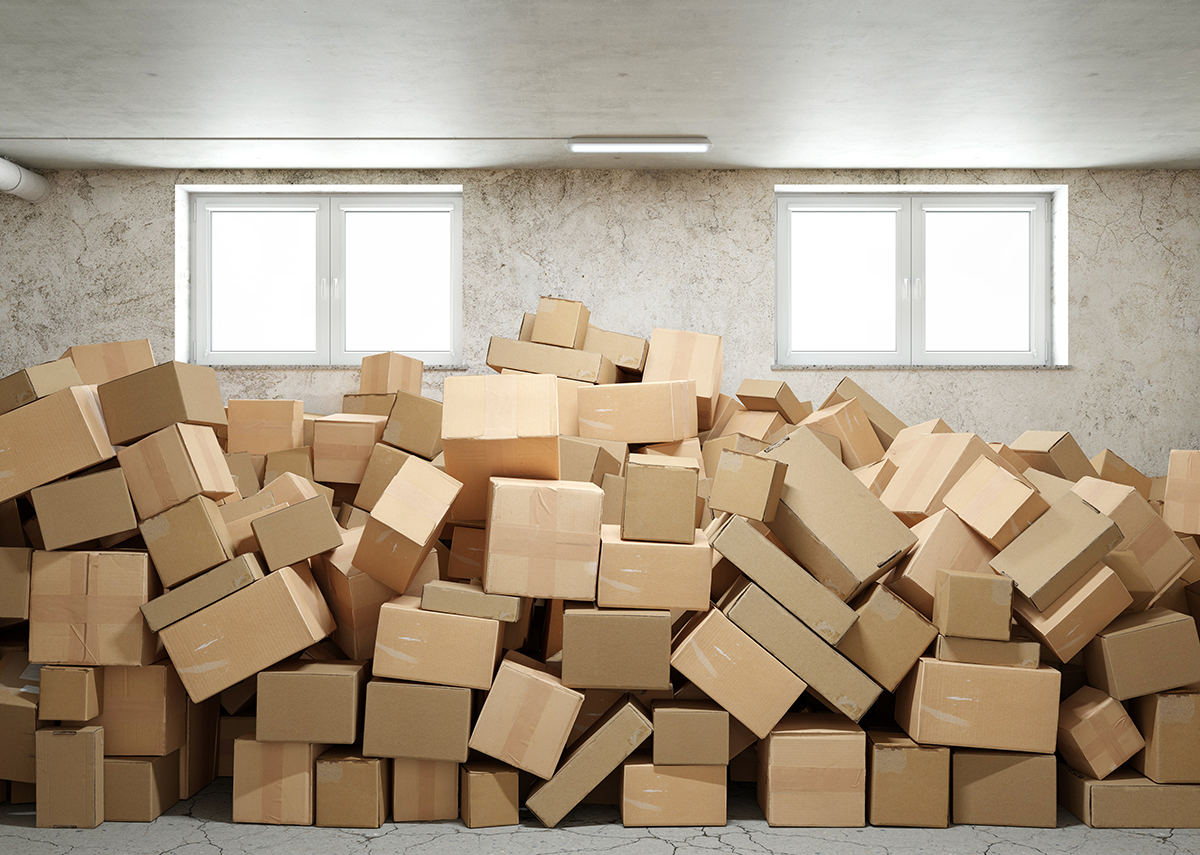Modern, smoothly functioning intralogistics has a major impact on the productivity of companies of any industry or size. However, companies today often rely on the storage of goods in conventional rack warehouses, which has been practiced for decades. But it is precisely this method that can act as a hindrance to intralogistics processes.
With the help of the following 10 signs, this can be easily checked with a view to realigning the intralogistics strategy. The more points apply to your own warehouse structure and processes, the closer it is to consider switching to an automated storage and retrieval system.
1. Constant storage and removal of inventory
The larger the proportion of frequently requested items (A items, fast-moving items) in the warehouse, the longer the waiting time until the goods can be made available from the static standard warehouses.
Solution: The use of dynamic storage solutions with high supply rates. These include, for example, AKL (automatic small parts warehouse) . Automatic small parts warehouses handle several hundred order items per hour and can help efficiently manage large order volumes during storage and retrieval.
2. Extensive routes in a spacious camp
During their tours through a conventional warehouse, employees travel many kilometers to get to the items to be picked and the central picking station. Ways that cost energy and take up to two thirds of the working time.
Solution: Devices with compact dimensions that allow high-density storage can be installed in a small space. For this purpose, the retrieved items are made available to the pickers directly at the workplace according to the goods-to-person principle. In this way, storage lifts, for example, reduce the distance traveled by staff to a minimum.
3. Long search times
When the order picker reaches the shelf with the item to be picked, additional time is spent searching for the compartment or container that contains the goods. Added to this is the time it takes to check and remove the item(s). A process that can take several minutes per pick.
Solution: Modern warehouse equipment supports order pickers with pick-by-light or pick-by-view systems . These aids allow employees to immediately and accurately identify the items to be picked using optical signals from LED lamps or laser pointers. Permanently installed barcode scanners also contribute to faster discovery and thus minimized search times.
4. Low precision of picks
Starting with the path to the right compartment and the visual comparison with the picking list, checking the item to be picked and finally ending with the manual confirmation on the picking list: There are many dangers for the order picker rack warehouse Making picking mistakes.
Solution: All of the above-mentioned sources of danger are eliminated with automated provisioning solutions that are controlled by sophisticated warehouse management software. These programs always only provide the required items at the removal opening, where the order pickers are also supported in their work by visual aids (see point 3). This means that the devices now achieve a precision of almost one hundred percent.
5. Weak throughput rate
When manually removed from the rack warehouse, the order picker often only picks a single item per tour, which leads to longer routes and wasted time. This means that some employees can only process 50 articles per hour.
Solution: Modern solutions such as an automated miniload system (see point 1 under automatic small parts warehouse) allow up to 250 double cycles (storage and retrieval) to be handled per picking station and hour. Productivity can also be noticeably increased through the software-controlled consolidation of orders (so-called multi-order or batch picking). By installing an additional removal opening on the storage device, the waiting times for staff can be further minimized and the pick rate can be further increased.
6. Damaged items
Whether on a board or in a separate compartment; Goods stored on shelves are susceptible to contamination and dust. In addition, there is damage caused by improper storage or removal. All of this reduces the value and lifespan of the stored goods. In some cases they even become unusable for further sale or downstream processing.
Solution: In vertical storage lifts or carousel warehouses, the items are stored in a closed system. This allows comprehensive protection against dust and dirt. In addition, the automated storage and provision protects the goods against improper handling, as they are only received by the staff at the picking station. Errors caused by improper handling are therefore reduced to a minimum.
By choosing between storage strategies such as LIFO or FIFO, the length of time items stay in the warehouse can be controlled as desired. Damage caused by staying in the warehouse for too long is therefore excluded.
7. Missing items
In large, open-shelf warehouses, items are often lost - mostly due to errors during storage. Finding the missing goods becomes a major challenge for intralogistics given the unmanageable area.
Solution: The warehouse management software of automated warehouse equipment is closely linked to the company's WMS or ERP systems. In this way, the path of the goods through the warehouse is precisely tracked. This makes it easy to determine where an item is currently located or where it was last registered. The software therefore guarantees permanent monitoring of the inventory in real time, which enormously reduces the risk of loss.
8. Damage caused by theft
In shelf warehouses, goods are inadequately protected against theft, which increases the likelihood of items being lost illegally.
Solution: In contrast to open rack warehouses, the closed system of storage lifts etc. ensures that goods are protected from unauthorized access during storage. The devices can optionally be equipped with personalized access to the picking station secured by code or chip card. The removals are logged so that it can be proven at any time who claimed the item that may have disappeared. Users who do not have the required authorization will be completely unable to remove the items. The goods are therefore doubly protected against theft.
9. Waste of storage space
Conventional rack warehouses not only require a lot of space. They usually waste valuable space, for example between the top shelf and the ceiling of the building.
Solution: Modern storage solutions are characterized by their compact design and high-density storage at the same time. Volume consumption can be efficiently minimized within the devices by individually adapting the shelf heights to the stored goods. With the help of software control, the goods are stored at the location where they optimally fill the available space. Compared to shelf storage, hardly any space is wasted.
The devices can be individually adapted to the height of the building, which further improves the use of the available space. savings of up to 66% (for horizontal carousels), 75% (vertical carousel warehouses) or even 85% (vertical storage lifts) can be achieved compared to rack storage
10. Lack of ergonomics in the workplace
Order pickers working at rack warehouses have to constantly bend or stretch to remove the sometimes heavy goods. The arms are put under too much strain and legs and feet also suffer in the long run from the long distances in the camp. Over time, this leads to overloading of the entire muscular system of the human body. The consequences of excessive stress are signs of wear and tear or even injuries, which is reflected in increased sickness among employees.
Solution: Devices that provide the retrieved goods to the staff at an ergonomically designed picking station according to the goods-to-person principle. Instead of traveling long distances, the employees remove the items at an ergonomically optimal height, which is approximately at waist height in the so-called golden zone. There is no need to bend or stretch your body, and your arms and legs are not overloaded. Employees are healthier and more productive.
Why Xpert.Plus ?
Xpert.Plus is a project from Xpert.Digital. We have many years of experience in supporting and advising on storage solutions and in logistics optimization, which we bundle in a large network Xpert.Plus
I would be happy to serve as your personal advisor.
You can contact me by filling out the contact form below or simply call me on +49 89 89 674 804 (Munich) .
I'm looking forward to our joint project.
Xpert.Digital – Konrad Wolfenstein
Xpert.Digital is a hub for industry with a focus on digitalization, mechanical engineering, logistics/intralogistics and photovoltaics.
With our 360° business development solution, we support well-known companies from new business to after sales.
Market intelligence, smarketing, marketing automation, content development, PR, mail campaigns, personalized social media and lead nurturing are part of our digital tools.
You can find out more at: www.xpert.digital – www.xpert.solar – www.xpert.plus


